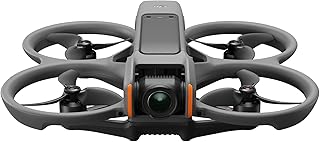DJI Drone for Wildlife Photography: Capturing Nature's Beauty from Above
Using a DJI drone to capture wildlife photography offers a unique perspective and allows you to showcase nature's beauty in a completely new light. Here's a guide to help you get started:
1. Choosing the Right DJI Drone:
* DJI Mini 3 Pro: Compact and portable, excellent for travel and capturing stunning aerial shots.
* DJI Mavic 3: Offers incredible image quality and impressive flight time, ideal for professional-level wildlife photography.
* DJI Air 2S: A good balance of features and price, perfect for both beginners and experienced photographers.
2. Essential Accessories for Wildlife Photography:
* High-Capacity Battery: Extends flight time, crucial for finding the perfect shot.
* ND Filters: Reduce light for smooth videos and better exposure control.
* Polarizing Filter: Enhances color saturation and reduces reflections.
* SD Card: High-speed, large capacity card to store your photos and videos.
* External Monitor: Improves visibility and helps you frame shots accurately.
3. Understanding Wildlife Regulations:
* Drone Laws and Regulations: Familiarize yourself with local drone laws and regulations in the area you're flying.
* Wildlife Protection Laws: Be mindful of wildlife protection regulations and ensure your drone activity doesn't disrupt animal behavior.
* Permits and Approvals: Obtain necessary permits or approvals for flying in sensitive areas or national parks.
4. Safe and Responsible Drone Operation:
* Maintain a Safe Distance: Respect wildlife and always keep a safe distance, avoiding disturbing or stressing animals.
* Observe Wildlife Behavior: Pay close attention to animal behavior and avoid flying directly over nesting areas or during sensitive periods.
* Fly Responsibly: Fly within visual line of sight, avoid flying near airports or restricted airspace, and be mindful of surrounding environment.
5. Mastering Drone Photography Techniques:
* Composition and Framing: Utilize the drone's perspective to create dynamic and impactful compositions, showcasing the animal's environment and natural habitat.
* Light and Shadows: Embrace the unique lighting conditions provided by aerial photography. Capture the play of light and shadows to create dramatic and intriguing images.
* Flight Patterns and Movement: Plan flight paths and movements to capture the animal's behavior and interaction with its surroundings.
6. Post-Processing and Editing:
* Enhance Image Quality: Adjust exposure, contrast, and sharpness to refine the final image and emphasize key elements.
* Create Stunning Compositions: Utilize editing software to crop, resize, and adjust the composition for optimal impact.
* Color Grading and Style: Experiment with color grading and editing styles to achieve the desired aesthetic and enhance the emotional impact of your images.
Ethical Considerations:
* Wildlife Welfare: Always prioritize the welfare of animals and avoid actions that could cause harm or distress.
* Environmental Impact: Be aware of the potential impact of your drone operations on the environment, particularly in sensitive areas.
* Privacy and Respect: Respect the privacy of individuals and avoid flying over private property without permission.
Remember, wildlife photography with a drone is a privilege. By understanding the rules, respecting the environment, and practicing responsible drone operation, you can capture stunning images and showcase the wonders of nature from a unique perspective.


